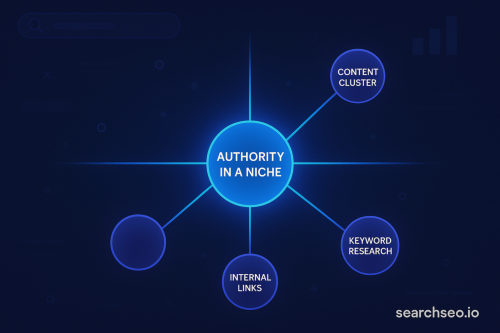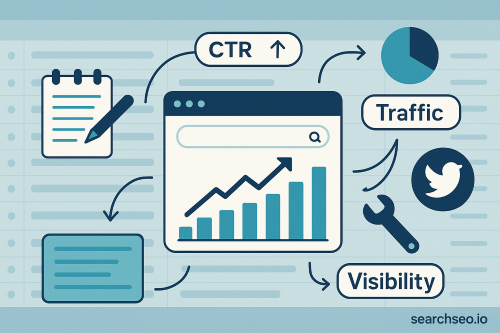If you’ve ever wondered how well your ads, emails, or search results are actually connecting with people, you’re already thinking about click-through rate (CTR). CTR is a simple but powerful metric: it tells you how many people saw your message and cared enough to click. Whether you’re running Google Ads, sending out newsletters, or tracking your website’s performance in search results, a strong CTR means your content is catching attention.
Think of CTR as a real-time vote from your audience. Each click is someone saying, “This interests me.” Not only does this help you understand what works, but it also signals to platforms like Google that your content is relevant, sometimes even boosting your rankings behind the scenes. That’s why more marketers are getting creative, even experimenting with tools that safely mimic human clicks to see what really moves the needle.
In this article, we’ll explain what CTR is, how to calculate it, what a good CTR looks like in 2025, and practical, ethical strategies to help you improve your numbers, no matter where you’re starting from.
CTR basics: definition, meaning & why it matters

CTR answers a deceptively simple question: Of everyone who saw my link, how many cared enough to click? In practice it measures micro-engagement that precedes any conversion, sale, or lead. Because clicks are voluntary, CTR doubles as a proxy for message-market fit and ad or snippet quality, and plays a crucial role in increasing organic traffic by signaling relevance to search engines.
Formula: clicks ÷ impressions × 100
If an ad receives 230 clicks from 6,100 impressions, its CTR is (230 / 6,100) × 100 = 3.77 %. Use the same math for organic results, social posts, or email buttons.
Example
- Paid text ad: 12,000 impressions / 890 clicks → 7.42 % CTR
- Organic result: 8,450 impressions / 1,355 clicks → 16.04 % organic CTR
CTR vs. Conversion rate vs. CTOR
- CTR gauges interest in the link.
- Conversion rate (CVR) gauges interest in the offer after the click.
CTOR (click-to-open rate) isolates email performance by dividing clicks by opens, filtering out deliverability factors.
How to calculate CTR (step-by-step)
- Collect impressions and clicks from Google Search Console, Ads, Meta Ads Manager, your ESP, or analytics platform.
- Apply the formula: clicks / impressions × 100.
- Validate seasonal spikes—holidays and promotions can inflate figures.
What is a good CTR? Benchmarks & standards
“Good” is contextual—industry, intent, device, and placement sway results. According to WordStream’s 2025 benchmark report, the average Google Ads search CTR across all industries is 6.66%; top verticals such as Shopping & Gifts exceed 9 %, while dental services hover around 5.5 %.
Key variables to watch:
- Industry: B2B software often earns lower CTRs than consumer apps.
- Ad type: Responsive search ads beat static text; native ads can deliver up to 8.8× higher CTR than display.
- SERP position: First organic result still captures roughly 27–32% of clicks, but rich snippets and favicons can shift attention.
- Channel: Email newsletters typically see 2–4% overall CTR, yet CTOR may surpass 12–15% for niche lists.
- “Unique” CTR (email) counts one click per opener; overall CTR counts all clicks, so compare apples to apples.
CTR in SEO & the SERP
Google has never officially declared CTR a ranking factor, yet multiple patent filings and field tests hint that high engagement can trigger a ranking lift, especially when paired with solid dwell time (time before a user returns to SERPs). Platforms like SearchSEO.io replicate realistic “dwell-and-click loops,” extending session length and signaling satisfaction.

Elements that influence organic impressions CTR:
- Compelling titles with primary keyword + emotional hook.
- Structured data (FAQ, How-to, product) that earns rich results.
- Favicon & brand name—recognition boosts trust.
- Meta description that matches intent and includes a soft CTA.
CTR across marketing channels
PPC / Google Ads
Search CTRs average 6-8 % in 2025, with display at ~0.9 %. Responsive search ads and AI-generated assets push upper-funnel CTRs higher.
Email (CTOR vs. CTR)
CTOR isolates engagement of opens alone; 2025 median CTOR sits near 11 %, while overall email CTR remains around 2.8 %.
Social & display
Facebook traffic campaigns show median CTRs of 1.3-1.6 %, whereas LinkedIn sponsored content hovers at 0.6-0.8 %.
Video & mobile
Mobile interstitial and rewarded-video formats routinely exceed 10 % CTR. Business of Apps pegs average mobile ad CTR at 1.1 % globally, climbing to 2+ % in gaming segments.
How to increase click-through rate (actionable tactics)
Messaging & creative
- Front-load primary keyword in titles or headlines.
- Use power verbs (“boost,” “unlock”) and specificity (“24-hour shipping”).
- Address pain points and benefits, not features.
Intent targeting
- Map queries to funnel stages; bid aggressively on high-intent keywords.
- For email, segment by behavioral triggers (recent purchase, cart abandon).
A/B testing frameworks
- Rotate two variables at a time (headline + description).
- Run tests for statistical significance (95 % confidence).
UX factors
- Ensure sub-2-second load speed (Core Web Vitals).
- Maintain clear visual hierarchy; highlight CTA buttons.
- Display trust badges or client logos to reduce friction.
Quick-win checklist
✓ Rewrite low-CTR page titles to include benefit statements.
✓ Add schema markup for FAQs and How-tos.
✓ Enable favicons and descriptive sitelinks.
✓ For ads: insert dynamic keyword insertion sparingly.
Advanced: CTR manipulation for SEO wins
Automated CTR bots have matured from crude click generators to sophisticated behavioral engines. SearchSEO.io leads the pack, check out our traffic bot comparison here:
- Smart dwell timing that emulates realistic scroll depth and on-page time (average 45–90 seconds).
- Geo routing across 150+ countries, perfect for local SEO campaigns.
- Residential IP rotation to bypass bot detection.
- Granular keyword targeting with real-time analytics dashboard.
Mini case study
A mid-tier e-commerce brand used SearchSEO.io to send 300 controlled clicks per day to six stagnating keywords. Over four weeks, average positions improved by 6.3 spots, pushing two keywords onto page 1 and lifting organic revenue 14 %.
Ethical considerations
Google’s guidelines discourage artificial engagement, yet many SEOs view controlled testing as experimentation rather than deception. Keep risk low by:
- Mixing paid ads and organic clicks.
- Limiting volume to < 5% of real traffic.
- Matching dwell times to genuine user behavior.
Think white-hat signal amplification, not black-hat spam.
Tools & resources
- Google Search Console – harvest impression and click data for every URL.
- WordStream 2025 benchmarks – compare PPC metrics by industry.
- Business of Apps ad metrics – up-to-date mobile ad CTRs.
CTR is more than a metric; it is the currency of attention that guides algorithms and buyers alike. By mastering the formula, benchmarking realistically, and applying the practical tactics above—including ethical CTR manipulation—you position every campaign for stronger rankings and richer returns.


.svg)

.svg)
%201.png)








.svg)